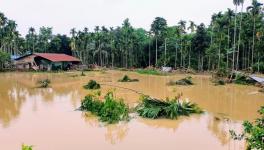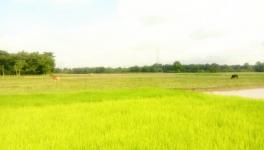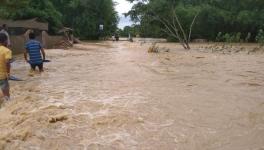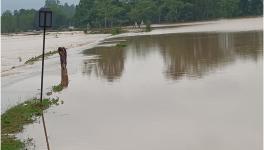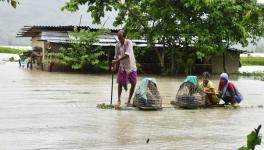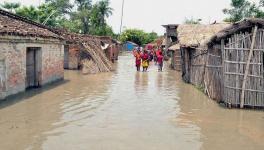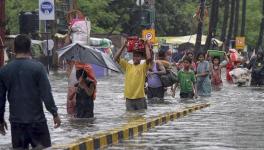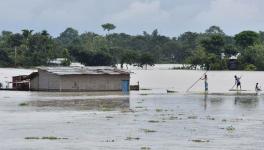Human Activities Intensify Devastation by Annual Floods in India and Nepal
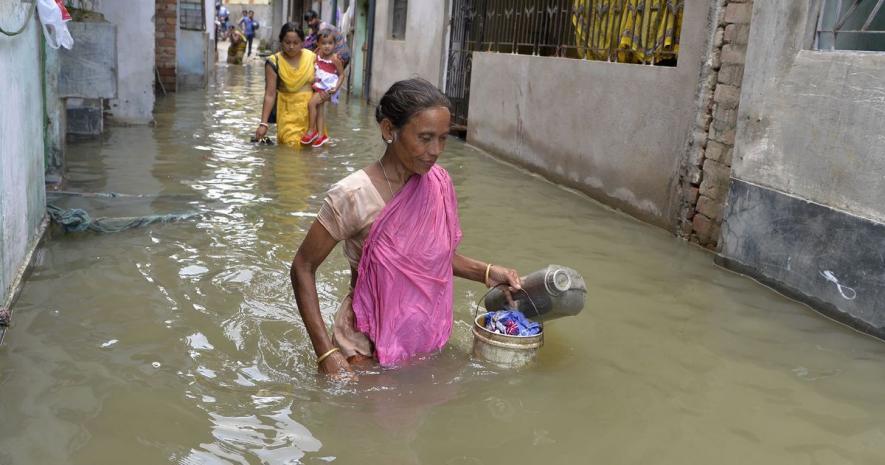
Image Courtesy: AFP
In India, Assam has been reeling under deadening floods for the last 10 days. Majority of the districts (30 out of 33) of the state have inundated. More than 43 lakh people have been affected severely with their homes, paddy fields, animal resources washed away by the furious waves. The state’s National parks—Kaziranga National park, Manas Tiger Reserve and Pobitora wildlife sanctuary, are also submerged.
The annual floods in Assam and the associated losses have only increased over the years. With the disaster relief mechanisms far from meeting the need and the early evacuation mechanisms in moribund state, people in the state are left with nothing but their agonies. Very unusually, Guwahati, the state’s capital is on the verge of getting inundated from the Brahmaputra River.
On the other hand, Bihar is also witnessing a devastating flood, where the death toll has risen to 24 with over 26 lakh people affected. The deluge has affected 12 districts of the state. Kishanganj, Araria and Sheohar areas of Bihar have witnessed heavy floods resulting in rising death toll. Primarily, water released from the neighboring Nepal’s dams, has created the havoc in Bihar.
Moreover, the hill state of Mizoram is also reeling under floods. From Lunglei district, at least 1000 families have been evacuated due to inundation of 32 villages by the Khawthlangpui River. Rain-related incidents have also claimed 5 lives so far in Mizoram. Several places have remained inaccessible due to landslides caused by incessant rains. Nearly 200 families were evacuated from central Mizoram’s Serchhip district.
In Meghalaya as well, plains in west Garo hills’ district have affected more than one lakh people.
At the same time, Nepal is also facing severe floods. The capital city of Kathmandu is submerging under water, leaving lakhs of people adversely affected.
Also Read: After Bihar, Flood Like Situation in Eastern Uttar Pradesh
Flood Devastations and the Man Made Part
While floods have been an annual phenomenon in most of these places, the devastation and the loss of property has increased manifolds over time. Human activities have also contributed to the increasing devastation caused by these annual floods.
In Assam, the floods and the subsequent losses are largely attributable to the construction of dams and the water released from them. The dams in Arunachal Pradesh when flooded by rain water, are opened and water in huge amount flows down rapidly towards Assam. The Brahmaputra River system has the linkage to the release of water from these dams. Many tributaries and small rivers flowing from Arunachal, ultimately merge with the Brahmaputra. Moreover, the nature of the construction required for these dams is heavy, during which, tons of huge boulders and stones from the hills are taken away. The silts under these huge stones and boulders get exposed in this process and flow downstream with water. This has destroyed hundreds of hectares of fertile land in Assam. The districts of North Lakhimpur and Dhemaji are living examples of it. Moreover, the river beds have become very shallow over time and swooning rivers during the monsoons, readily deluges nearby areas.
In Bihar also, similar situations prevail. The main contributors to Bihar flood are the Kosi and Gandaki Rivers. Kosi and Gandaki are tributaries of the Ganges. Both these rivers have dams in the hilly areas that lie in Nepal. The barrages in Nepal, when over flooded, are opened and the extra water flows down to Bihar via Kosi and Gandak rivers. Notably, although the barrages are situated in Nepal, their operational control is with India. This is in accordance with Kosi and Gandak treaties between India and Nepal signed in 1954 and 1959 respectively.
Considered as Bihar’s sorrow, the Kosi barrage alone has 56 floodgates. When monsoon rainwater breaches the limit and the floodgates are opened, they create havoc in downstream areas. On the other hand, not opening the gates of the barrage also inundates local settlements in Nepal, for which, India has been criticized.
Many of Nepal’s rivers flow through the Chure mountain range, the ecology of which is very fragile and severely threatened. These hills used to check the flow of rivers and minimized the loss, both in Nepal and India (across its borders with Nepa)l. But large scale deforestation and mining has destabilized the mountain system. The construction boom led to uncontrolled mining of boulders, pebbles and sand from the river bed. With the natural checkpoints of flood gone, monsoon floods are no more under control.
Get the latest reports & analysis with people's perspective on Protests, movements & deep analytical videos, discussions of the current affairs in your Telegram app. Subscribe to NewsClick's Telegram channel & get Real-Time updates on stories, as they get published on our website.









